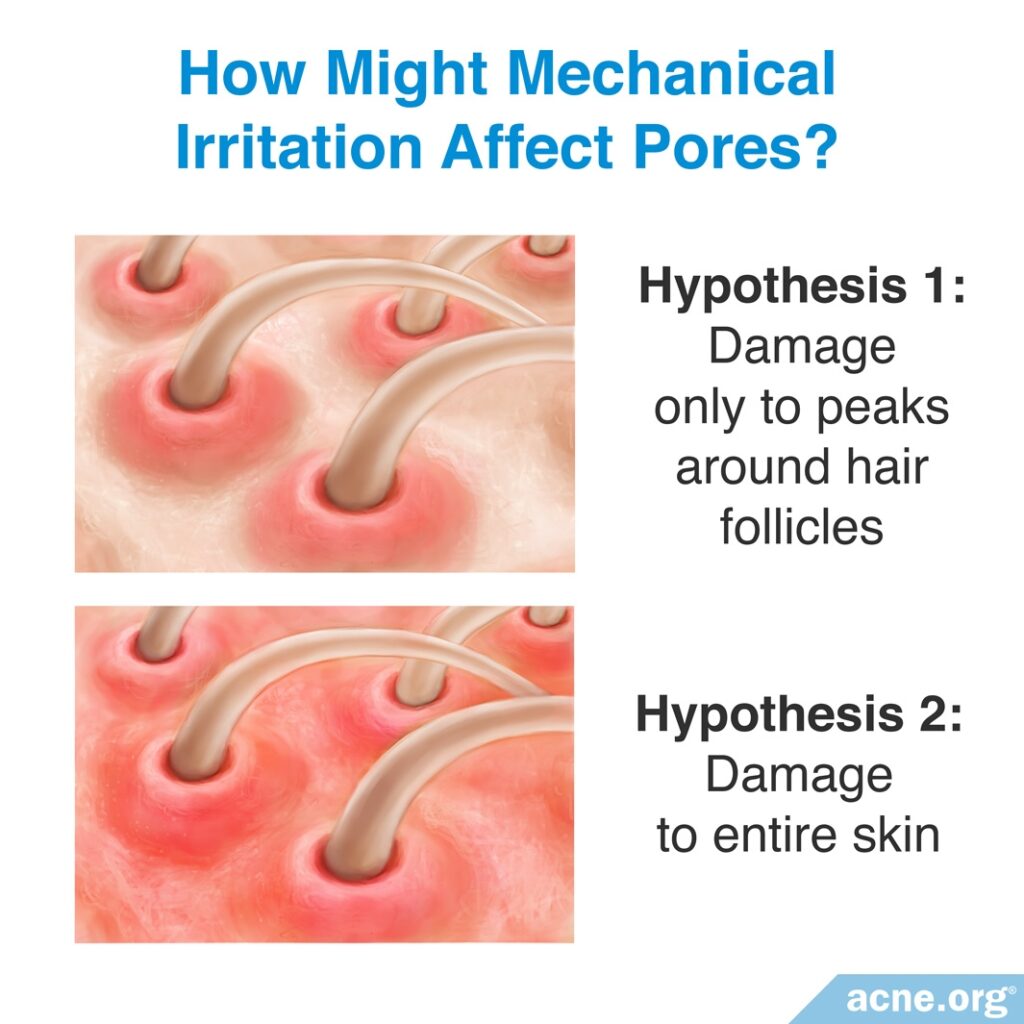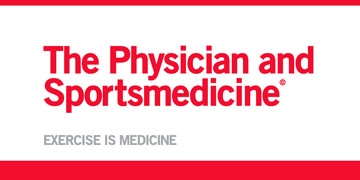Views: 0
Yes, and It Can Occur in Anyone – Even Those with Healthy Skin

The Essential Info
Physical irritation of the body is unavoidable and in most instances is harmless. However, when this irritation is repetitive it can make acne worse, especially when the skin is sweaty. The more the skin is exposed to physical irritation, the more acne tends to develop.
Acne mechanica, which is the scientific term for acne caused by physically irritating the skin, may occur anywhere on the skin, depending on what part of the body is exposed to physical irritation.
To limit acne on the body, try to eliminate obvious sources of repetitive physical irritation, but don’t stress about it too much. Proper topical treatment of the body can normally keep acne at bay.

The Science
- Potential Sources of Irritation on the Body
- Studies Show a Link Between Physical Irritation and Acne
- Body Acne in Football Players
- Body Acne in Other Athletes
- Acne on the Back of the Neck
- The Bottom Line
Acne is a disease most known for its appearance on the face, but it can also occur anywhere on the body, except on the palms of the hands and soles of the feet. It is primarily an inflammatory disease, and anything that increases inflammation, such as irritating the skin, may increase acne symptoms.
Acne that is the result of physical irritation of the skin is called acne mechanica. It is now generally recognized and known that friction, tension, rubbing, and persistent pressure from belts, seats, tight clothing, and other physical irritants can cause and/or worsen acne, even in people who are not acne-prone.1-5
In this article, we will focus on acne mechanica on the body, but it can happen on the face as well.

While skin appears smooth to the naked eye, in reality it is comprised of a series of “hills” and “valleys.” Under a microscope, we can see that inside of the skin’s pores are tiny hairs. These hairs create “peaks” on the skin, with valleys between each peak.1
One hypothesis is that physical irritation may occur due to these microscopic peaks being rubbed or hit, causing mechanical damage to the upper portion of the hair follicles. This mechanical damage may induce an inflammatory response and, subsequently, acne.
A second hypothesis contends that rubbing against the skin may affect the entire surface, not just the upper portion of the hair follicles.

Sweating can make acne mechanica worse: Further irritation can result when the body’s skin becomes sweaty. The excess moisture softens the skin, making it more prone to damage. So, for example, wearing a purse or backpack on a hot day could cause even more irritation than on a cool day, due to the extra moisture on the skin.
Potential Sources of Irritation on the Body

There is no way to avoid things touching the body throughout the day. However, if you are breaking out in one particular area of your body, you may want to consider potential repetitive irritation to that area. Sources of acne mechanica on the body include the following, among many others.
- Sports – Most kinds of sports require protective equipment, which can lead to repeated friction on the skin.
- Backpacks or purses
- Massages
- Clothing – Tight collars, tight bra straps, and tight underwear are examples of clothing that might cause irritation.
Studies Show a Link Between Physical Irritation and Acne
The following studies show that physical irritation can lead to acne, and that sweating can make it worse.
Expand to read details of studies

The study that first introduced the term acne mechanica was published in 1975 in Archives in Dermatology. In this study, researchers applied a two-inch piece of adhesive tape to the skin on the shoulder blade of 10 adolescent volunteers with both facial and body acne. The researchers chose the shoulder blade area because acne lesions were minimal there. They could thus test to see if applying irritating tape to the area would make their acne worse. The researchers evaluated the volunteers and applied new, identical tape each week for two weeks.
- After one week, researchers noticed an increase in the number of inflammatory lesions under the taped area in 5 of the 10 subjects.
- After two weeks, new inflammatory pimples had appeared on the exposed skin in 7 of the 10 subjects. Application of tape did not impact comedones (non-inflamed clogged pores), which had already been present before taping.
Researchers cut out small samples of the participants’ skin after two weeks and concluded that the increase in inflamed acne that they saw was likely due to irritation to existing microcomedones (the initial stage of acne preceding the comedones) in the skin, causing them to become inflamed acne.1,2
These drawings below show a typical increase in clogged pores and additional acne after two weeks of physical irritation:


In another study published in the British Medical Journal in 1976, researchers monitored nine patients who had been bed-ridden for a prolonged period of time, during which they had to lie on their backs most of the time. Within that time period, all nine patients developed back acne. The researchers concluded that the occurrence of acne in these individuals could be due to:
- Increased sweating on the back. Sweating hydrates the skin protein keratin, causing it to expand in volume. As keratin increases in volume, it begins to obstruct the skin pores, ultimately clogging the pores.
- Congestion of sebum (skin oil) due to immobility. Because the patients in this study were lying on their backs for a prolonged duration of time, it likely prevented the sebum from making its way out of the pore as it normally would. The follicle then becomes enlarged, and oxygen levels inside drop. Such an environment is ideal for the anaerobic (prefers an oxygen-free environment) bacteria Cutibacterium acnes to inhabit the follicles. It grows and reproduces faster than usual, causing irritation and inflammation, and soon a comedone is formed.3

One case report published in the journal Pediatric Dermatology in 2019 showed that acne mechanica can even occur when two skin surfaces rub against each other. In this case report, a 17-year-old girl visited a dermatologist complaining of blackheads forming on her inner thighs. These blackheads appeared during the summer, when she wore shorts or dresses that allowed her thighs to rub against each other. The researchers concluded that the pressure of 2 skin surfaces pushing against each other could trap skin oil in skin pores, ultimately resulting in inflammation and the development of acne.6
Body Acne in Football Players

It is no surprise that acne mechanica on the body is associated with playing sports. This is particularly so for people who play contact sports, such as football. The most common cause is the wearing of protective equipment, which rubs against and irritates the skin, especially on the shoulders, upper back, back of the neck, and chin – all areas where protective equipment is worn.

According to the journal called The Physician and Sportsmedicine, in football players, acne mechanica “is not seen during the first days of practice before protective equipment is worn and starts to improve immediately after the season is over…”5 This gives further evidence that acne mechanica is specific to the irritated areas of the skin, and that removing the triggering factor can eliminate the issue.
Body Acne in Other Athletes
Besides football players, acne mechanica may occur in other athletes such as runners, cyclists, cricket players, and weight lifters. Acne may also develop beneath the tight, synthetic clothing of gymnasts.
Since sweating can make acne mechanica worse, taking a shower immediately after playing sports and wearing moisture-wicking clothing can both help.7,8
Acne on the Back of the Neck

The back of the neck is a common area where acne mechanica can strike. Stiff collars which rub against the skin all day long produce the irritation necessary to induce acne in some people.
However, when it comes to the back of the neck, there is also a unique type of acne that can occur due to physical irritation called acne keloidalis nuchae (AKN).

According to one study published in 2007 in the International Journal of Dermatology, 90% of patients with AKN felt that having their hair cut at a barbershop is what triggered this condition. AKN caused by use of razor blades at a barbershop could arise due to one of two occurrences:
1. Repetitive use of a particular razor. When a razor is used repetitively, the edge of the razor will eventually become dull, and the barber will need to apply more pressure to perform a close shave. This results in damage, or irritation, to the skin, potentially setting the stage for acne.
2. Use of non-sterilized razors. A razor that has not been sterilized properly can spread infection.4
The Bottom Line
Any kind of repetitive physical irritation can lead to acne on the body, and sweat worsens the problem. However, we can’t lead lives without lots of things coming into contact with our bodies all day long. Therefore, don’t stress about it too much. Instead, simply eliminate obvious sources of irritation when you can, and properly treat the skin to prevent breakouts.
References
- Zeichner, J. Acneiform Eruptions in Dermatology. 125 – 128 (Springer, 2014). https://link.springer.com/book/10.1007/978-1-4614-8344-1
- Mills, O. & Kligman, A. Acne mechanica. Arch. Dermatol. 111, 481 – 483 (1975). https://www.ncbi.nlm.nih.gov/pubmed/123732
- Tan, S. G., Cunliffe, W. J. & MacGregor, A. J. Acne mechanica. Br. Med. J. 1, 130 (1976). https://www.bmj.com/content/bmj/1/6002/130.1.full.pdf
- Salami, T., Omeife, H. & Samuel, S. Prevalence of acne keloidalis nuchae in Nigerians. Int. J. Dermatol. 46, 482 – 484 (2007). https://www.ncbi.nlm.nih.gov/pubmed/17472675
- Basler, R., Hunzeker, C. M. & Garcia, M. A. Athletic skin injuries. Phys. Sportsmed. 32, 33 – 40 (2004). https://www.ncbi.nlm.nih.gov/pubmed/20086411
- Mazhar, M., Simpson, M. & Marathe, K. Inner thigh friction as a cause of acne mechanica. Pediatr. Dermatol. 36, 546-547 (2019). https://pubmed.ncbi.nlm.nih.gov/30883890/
- Shaukat, S., Aman, S. & Kazm, A. H. Skin and sports. Journal of Pakistan Association of Dermatologists. 25, 206-211 (2015). http://applications.emro.who.int/imemrf/J_Pak_Assoc_Dermatol/J_Pak_Assoc_Dermatol_2015_25_3_206_210.pdf
- Adams, B. B. Dermatologic disorders of the athlete. Sports Med. 32, 309-321 (2002). https://www.ncbi.nlm.nih.gov/pubmed/11929358
The post Does Physically Irritating the Skin Cause Body Acne? appeared first on Acne.org.

